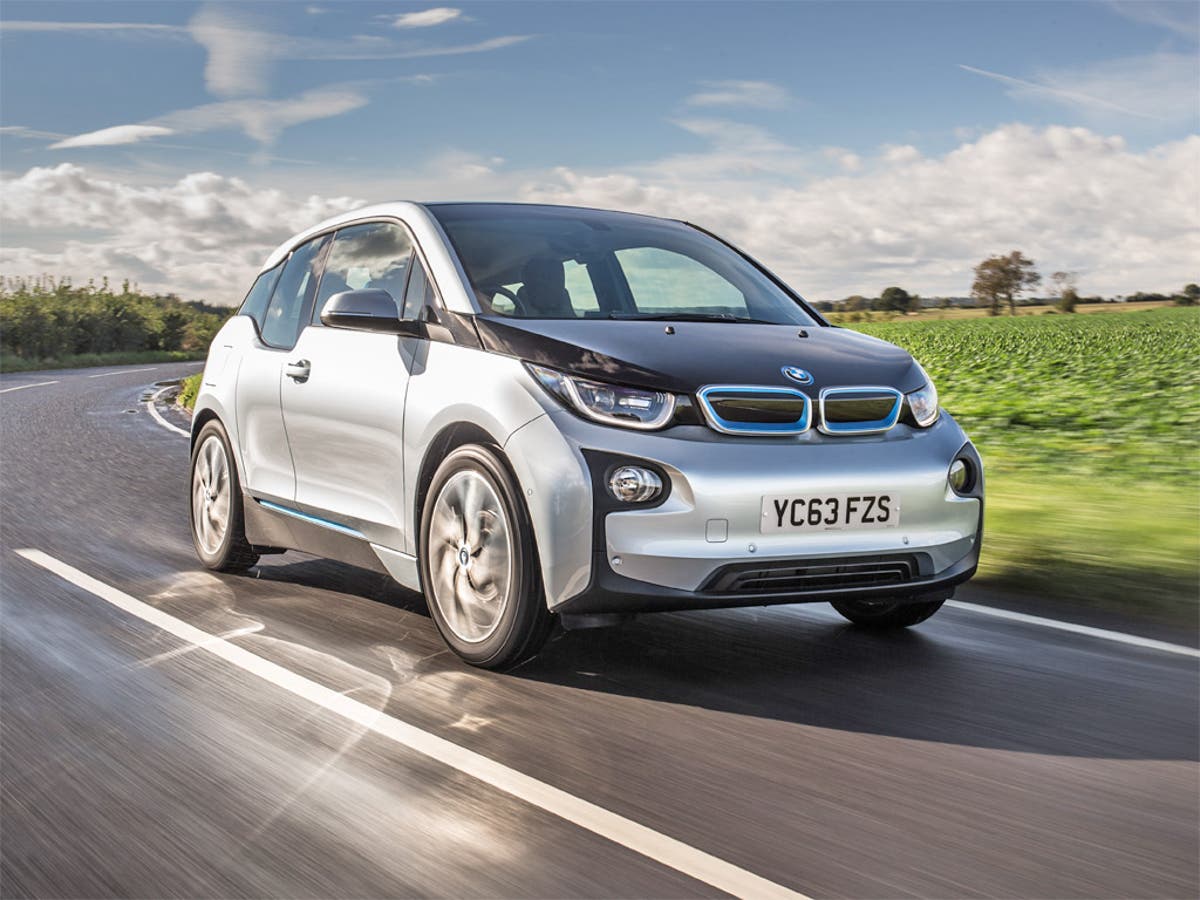Now is the perfect time to buy a secondhand EV – and with sales of used electric cars growing faster than new EV sales right now, it’s easy to see why. Electric cars tend to lose their value pretty quickly, in some cases falling by as much as 50 per cent in the first year alone, and while that’s an uncomfortable thought for new owners, it’s fantastic news if you fancy picking up a used-car bargain.
Fears that electric car batteries won’t last long enough are quickly becoming a thing of the past now, too – as we proved when testing a decade-old Tesla Model S with more than 250,000 miles on the clock. Crucially, that car was still using its original battery, and had 84 per cent of its original capacity remaining. That – along with frequent software updates than fix bugs and even add new features years after they launched – is just one reason why the Model S and smaller Tesla Model 3 appear among our ten favourite used EVs to buy in the UK.
A key point to remember when buying a used EV is, if it has been serviced correctly, the battery will likely still be covered by its eight-year manufacturer warranty. This means if the battery, of its ancillary components, fail during that time, the manufacturer will fix or replace the faulty parts without any costs coming back to you. The two Kias on our list get the remainder of their seven-year manufacturer cover for used car owners.
You should also remember that, as with all used-car buys, condition and history are crucial. So make sure you delve into the car and its history, and also check for reviews of the seller, too. Only when you’re 100 per cent happy, do the deal – and enjoy the comfort, refinement and low running costs electric cars have to offer.
How we tested
As with all our car tests, we start by understanding the needs of the buyer – and in the secondhand market there are different priorities, especially around reliability and build quality. So we’ve looked into all that, while also talking to owners and looking into owner surveys to see if people are happy with their cars after a period of time living with them.
Value also comes into it – cars depreciate at different rates and what might not be the best buy new, can look all the more attractive when it comes to sitting on a used forecourt. Plus, of course, there are still the things that a car has to do for you, so we assess the cars in the real-world situations you’ll drive them in, and check on running costs over a typical ownership period.
The best used electric cars in 2024
- Best for city driving – BMW i3: From £6,000, BMW.co.uk
- Best for families – Kia Niro EV: From £11,000, Kia.com
- Best for tech – Tesla Model 3: From £12,000, Tesla.com
- Best for reliability – Nissan Leaf: From £6,650, Nissan.co.uk
- Best for luxury – Jaguar I-Pace: From £10,000, Jaguar.co.uk
Best: For city driving
Independent rating: 9/10
- Pros: Great to drive, sustainable interior, ideal city car
- Cons: Firm ride, rear seat access, range extender model
- Price: From £6,000
- Maximum claimed range: 192 miles
- Maximum charge rate: 50 kW
- Seats: 4
- Dimensions: 4,011 x 1775 x 1598 mm
- Boot space: 260 litres
The BMW i3 was a car ahead of its time. It’s an unconventional, yet highly appealing choice of electric car, especially for those who value sustainability and design innovation. Launched in 2013, the i3 broke the mould with its distinctive look, featuring rear-hinged back doors and a futuristic cabin filled with eco-friendly materials such as recycled plastics and natural fibres. Despite its compact size, once you’re inside the i3 offers a surprisingly spacious interior, thanks in part to its flat floor and upright seating position.
In terms of reliability, the i3 has a solid track record, with few major issues reported by owners. The range, however, is one of the i3’s weaker points, particularly in earlier models, which offer around 100 miles on a full charge. Later models, including those with the Range Extender (a small engine used to charge the battery on the go), provide a bit more flexibility, though still not on par with newer competitors.
Comfort-wise, the i3 is well-suited for urban driving, with its small size making it easy to manoeuvre and park. The ride can be a bit firm on the sportier i3S model, especially on rougher roads, but overall it’s a vehicle for daily commuting and great fun to drive, with nippy acceleration.
Running costs are low, as you’d expect from an electric car, with minimal maintenance and energy costs. However, its premium price, even on the used market, reflects BMW’s renowned build quality. The i3 might not be the first choice for long journeys or those needing extensive range, but it remains an excellent option for city dwellers who appreciate its quirky charm and eco-friendly ethos.
Best: For families
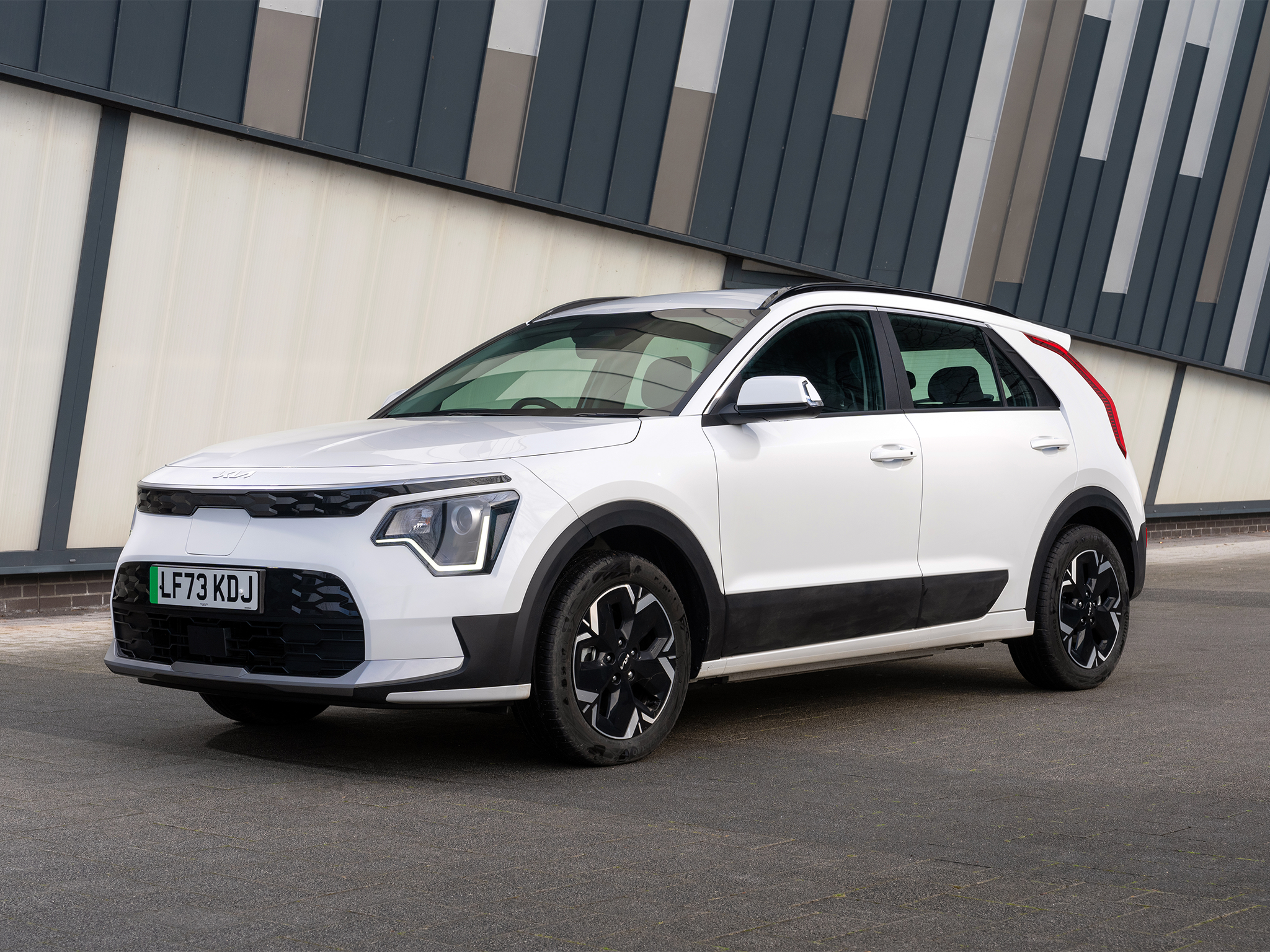
Independent rating: 8/10
The Kia Niro EV is a well-regarded electric SUV that shares many of its underpinnings with the Hyundai Kona Electric, but with a slightly more traditional design. It’s a car that has quickly become popular in the UK, thanks to its impressive range, practicality, and value for money.
The Niro’s range is one of its standout features, with the 64kWh model capable of delivering up to 282 miles on a single charge, making it an ideal choice for those with longer commutes or frequent long-distance travel.
Read our full Kia Niro EV review
In terms of build quality, the Niro is robust, with a solid feel that’s characteristic of Kia’s recent models. The interior, while not as flashy as some rivals, is well-built and features high-quality materials throughout. The cabin is spacious, with plenty of room for passengers and luggage, making it a great option for families and mini cab drivers – make sure any car you buy has been properly looked after. The infotainment system is user-friendly and comes with all the necessary features, including Apple CarPlay and Android Auto.
Comfort levels are high, with the Niro offering a smooth and composed ride. The suspension does a good job of soaking up bumps, and the seats are comfortable and supportive, even on longer journeys.
Running costs are low, as you’d expect from an electric vehicle, and the Niro benefits from Kia’s industry-leading seven-year warranty, which is transferable to subsequent owners. This, combined with Kia’s reputation for reliability, makes the Niro EV a very appealing option in the used EV market.
Best: For tech and charging

Independent rating: 8/10
- Pros: Quick, great tech, strong range, Supercharger network
- Cons: Ride is a bit firm, quality of early cars is mixed
- Price: From £12,000
- Maximum claimed range: 348 miles
- Maximum charge rate: 250 kW
- Seats: 5
- Dimensions: 4,720 x 1,850 x 1,441 mm
- Boot space: 594 litres
The Tesla Model 3 is a game-changer in the electric car market, offering a combination of range, performance, and technology that has made it one of the most sought-after electric vehicles in the UK. The Model 3 is available in several versions, with ranges of up to 348 miles, making it one of the best options for those who need a long-range EV. Its minimalist interior, dominated by a large touchscreen, is both futuristic and functional, with decent-quality materials and a sense of space that belies its relatively compact dimensions.
Read our full Tesla Model 3 review
Reliability is generally good, although early models did suffer from some build quality issues, such as panel gaps and paint defects. However, Tesla has worked hard to address these, and newer models are much improved in this regard – especially those bult in China and then Berlin. The Model 3’s cabin is a comfortable place to be, with supportive seats and a quiet, refined driving experience. The ride is firm, but the handling is sharp, making the Model 3 one of the most engaging electric cars to drive.
Running costs are low, with minimal maintenance requirements and access to Tesla’s Supercharger network, which makes long-distance travel easy and affordable. The Model 3 also benefits from low road tax, making it an economical choice for both private and business users, although insurance can be a bit pricey.
Buy through Tesla’s Certified Pre-Owned scheme and you’ll be guaranteed the latest software updates on your car, including Enhanced Auto Pilot self-driving tech.
Best: For reliability
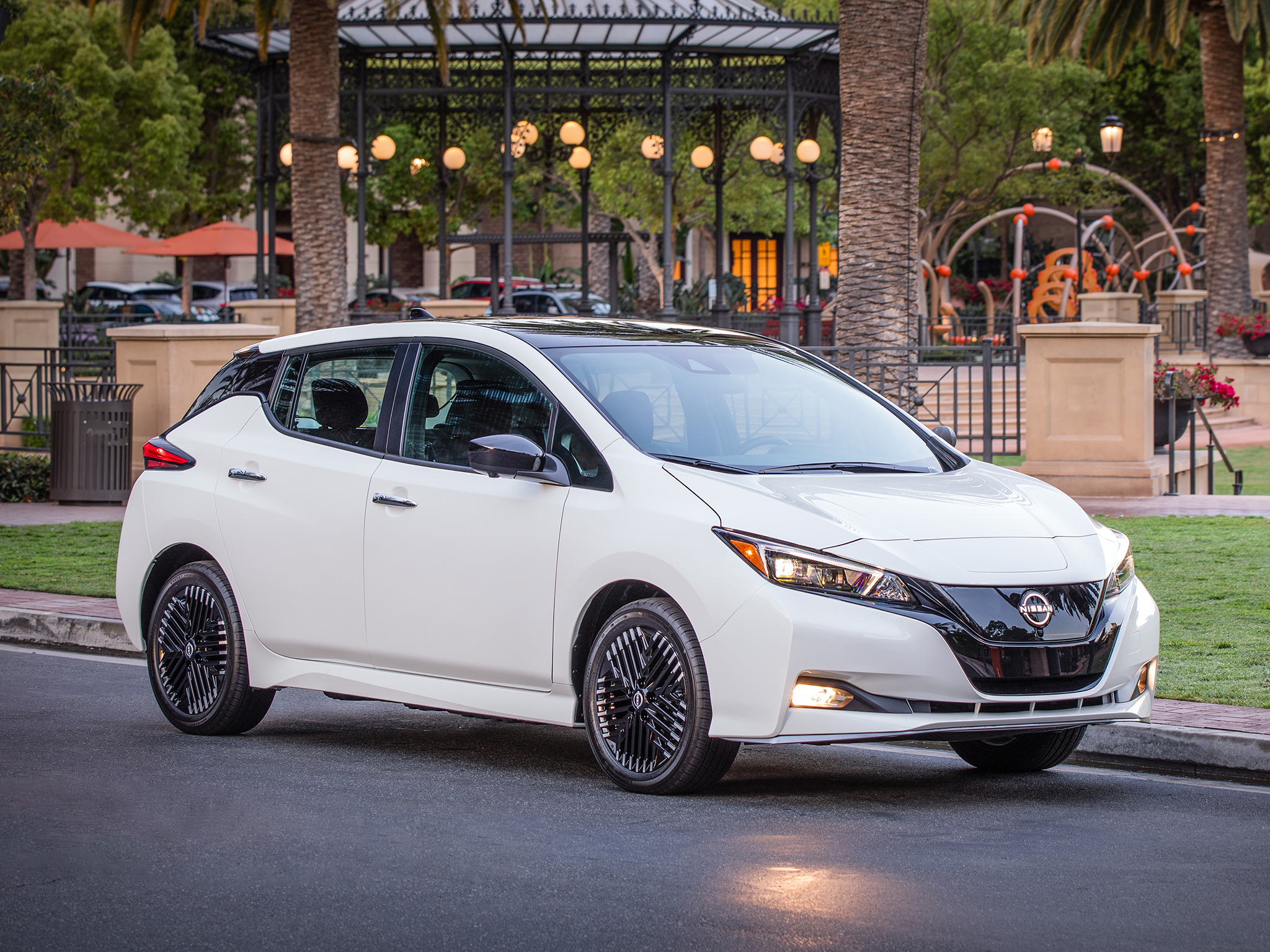
Independent rating: 7/10
- Pros: Decent space, low prices, reliability
- Cons: Uninspiring drive, build quality, CHAdeMO fast charging
- Price: From £6,650
- Maximum claimed range: 239 miles
- Maximum charge rate: 46 kW (model year dependent)
- Seats: 5
- Dimensions: 4,480 x 1,790 x 1,540 mm
- Boot space: 435 litres
The Nissan Leaf is a pioneering vehicle in the electric car market, and it remains one of the best-selling electric cars in the UK. It’s evolved significantly since its debut in 2010, with the second-generation model offering substantial improvements in range, performance, and technology. With a claimed range of up to 239 miles in the 62 kWh e+ version, the Leaf is capable of handling longer journeys with ease, making it a versatile option for many drivers.
Read our full Nissan Leaf review
Reliability has been a hallmark of the Nissan Leaf, with many early models still performing well on the road today – it always ranks highly in reliability surveys. The electric powertrain is relatively simple, which reduces the potential for mechanical issues. Interior materials and design are more functional than luxurious, but the Leaf’s cabin is spacious, with plenty of room for passengers and a decent-sized boot, making it a practical choice for families.
Comfort is another area where the Leaf excels. The ride is reasonably smooth, and the seats are comfortable, even on longer journeys. The Leaf is also very quiet, thanks to the lack of engine noise, which enhances the overall driving experience. It’s not the most exciting car to drive, with a focus on efficiency rather than performance, but it’s easy to drive and manoeuvre, particularly in urban environments.
Running costs for the Leaf are low, with minimal maintenance required. Overall, the Nissan Leaf is a reliable, practical, and cost-effective electric car that has stood the test of time, making it a great option in the used market.
Best: For luxury
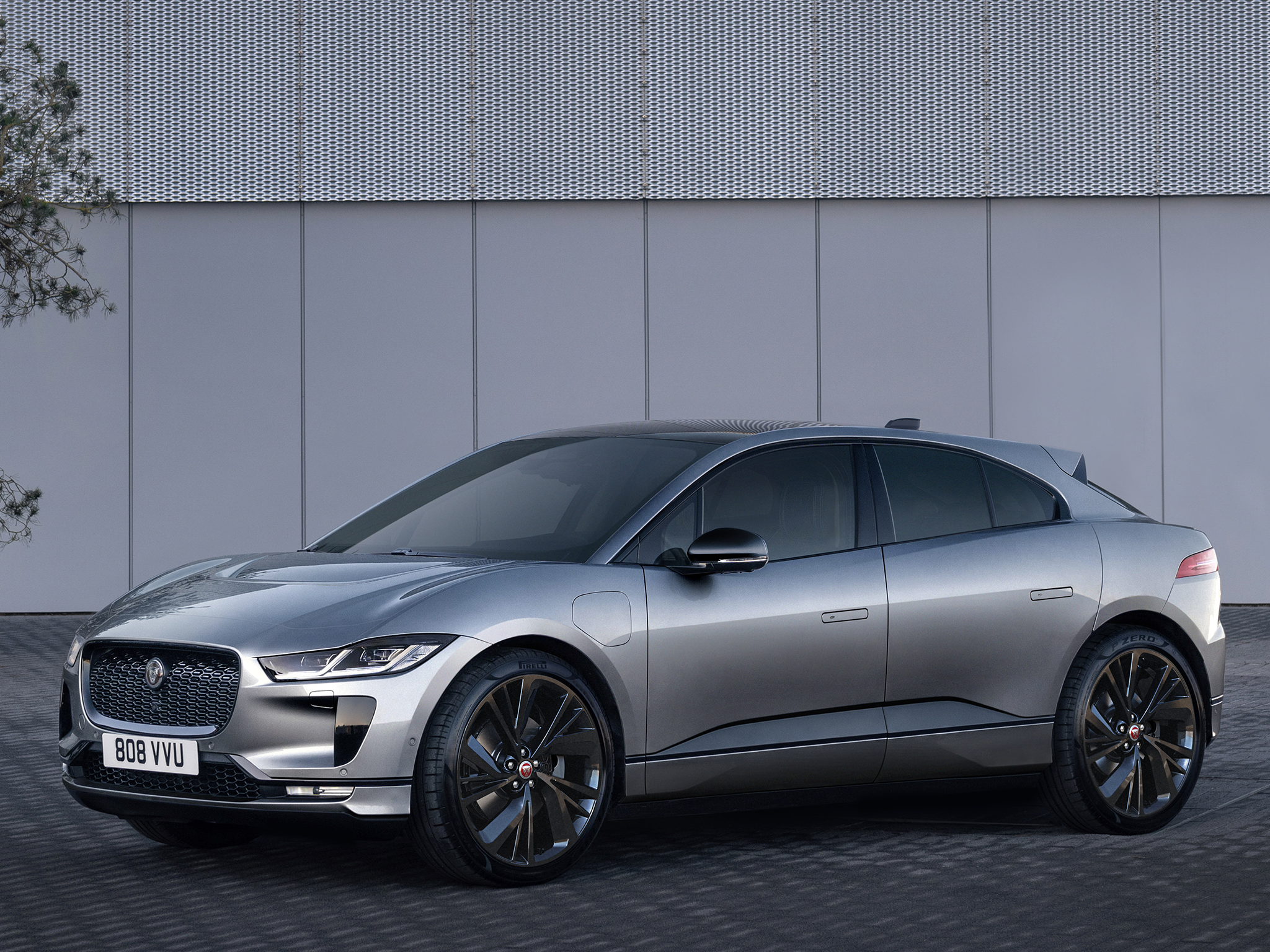
Independent rating: 7/10
- Pros: Great to drive, updated tech, strong build quality
- Cons: Real-world range disappointing
- Price: From £10,000
- Maximum claimed range: 292 miles
- Maximum charge rate: 100 kW
- Seats: 5
- Dimensions: 4,682 x 1,895 x 1,565 mm
- Boot space: 656 litres
The Jaguar I-Pace is a stunning electric SUV and a former World Car of the Year. It has been widely praised for its blend of performance, luxury, and cutting-edge technology. As Jaguar’s first all-electric vehicle, the I-Pace has set a high standard, offering a claimed range of up to 292 miles on a single charge although users rarely get anywhere near that figure. Its combination of sharp handling, strong acceleration, and premium interior makes it one of the most desirable electric cars on the market – especially at the prices you can get one for now.
Build quality in the I-Pace is excellent, as you’d expect from Jaguar. The interior is a mix of high-quality materials, including leather, metal, and soft-touch plastics, all of which contribute to a luxurious and refined cabin environment – and they’ve lasted well. The design is modern and stylish, with a digital dashboard and a dual-screen infotainment system that’s both functional and visually appealing. The I-Pace also offers plenty of space for passengers and luggage, making it a practical option for those who need both performance and practicality.
Comfort is a key strength of the I-Pace. The ride is smooth and well-controlled, thanks to its sophisticated suspension setup, which can be further enhanced with air suspension on some cars.
Driver appeal is where the I-Pace really stands out. With two electric motors providing all-wheel drive, the I-Pace delivers instant torque and strong acceleration, making it one of the quickest electric SUVs on the market. Its handling is also impressive, with sharp steering and a balanced chassis that make it enjoyable to drive on twisty roads, belying its SUV proportions and weight.
Running costs for the I-Pace are relatively low for a vehicle of its performance and luxury level. Jaguar’s reputation for reliability isn’t great, but the I-Pace was built in Austria by Magna, so quality over the long term should be better than some of the British-built Jags.
Best: For small families
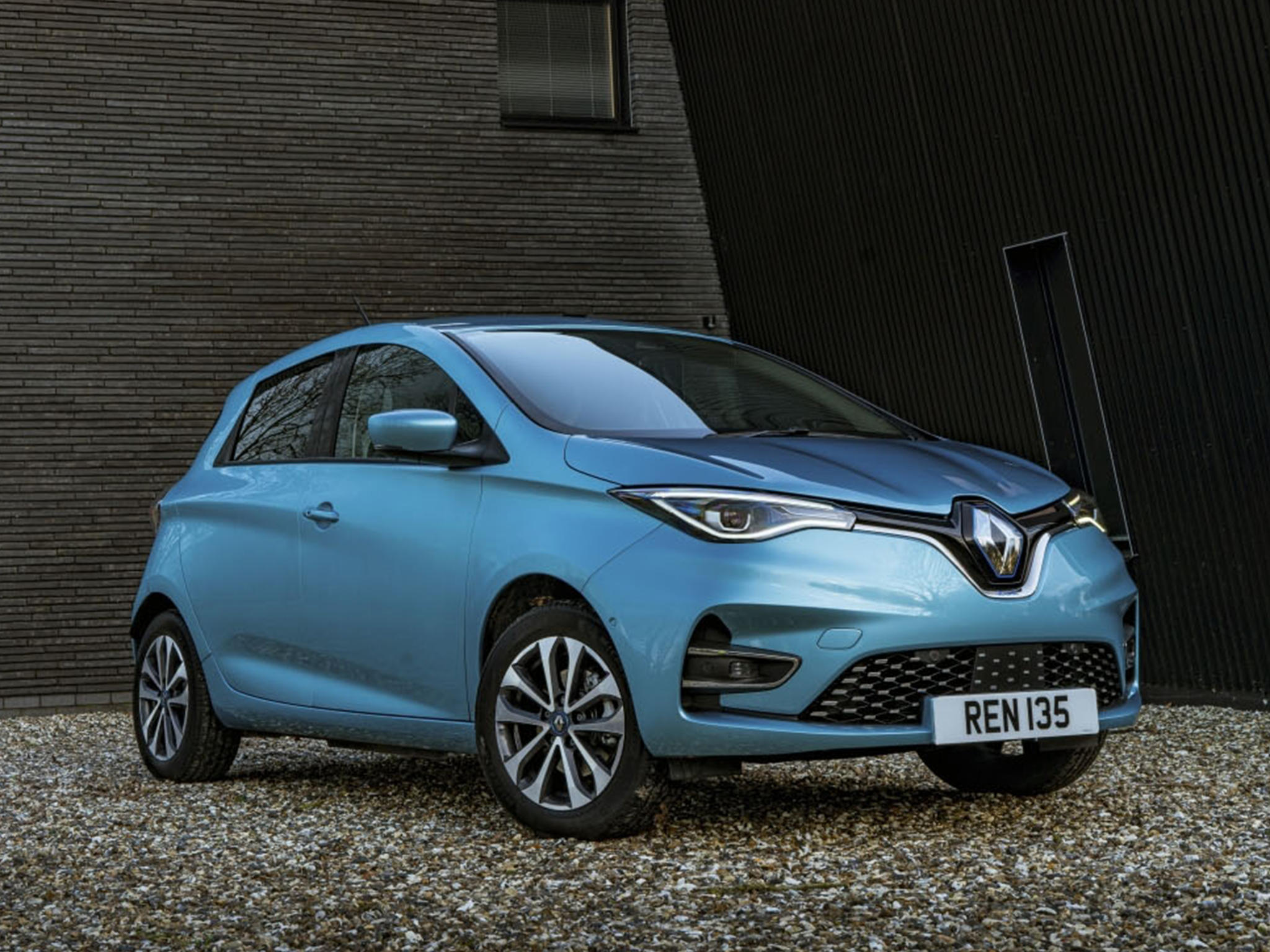
Independent rating: 7/10
- Pros: Ideal for town use
- Cons: Driving position, build quality, some batteries on lease
- Price: From £4,850
- Maximum claimed range: 249 miles
- Maximum charge rate: 46 kW
- Seats: 5
- Dimensions: 4,087 x 1,787 x 1,562 mm
- Boot space: 338 litres
The Renault Zoe is one of the most popular small electric cars in the UK, offering an affordable entry point into EV ownership. The Zoe is particularly well-suited to urban driving, with its compact dimensions and nimble handling making it easy to manoeuvre through city streets. Despite its small size, the Zoe offers a decent range, with newer models capable of up to 249 miles on a single charge, which is impressive for a car in this segment. Beware of cars with the battery on lease, though – you’ll have to pay an extra monthly fee. It was a silly idea, that Renault eventually dropped.
Reliability is generally good, although it’s important to check the condition of the battery on used models, as this can affect both range and performance. The Zoe’s build quality is decent for its price point, although the interior is more functional than luxurious, with hard plastics used throughout. However, the cabin is well-designed, with a simple and intuitive layout that’s easy to live with on a daily basis.
Read our full Renault Zoe review
Comfort levels are good, with a smooth ride and supportive seats, although the driving position is a bit upright with limited adjustability. The Zoe’s compact size does limit interior space, but it’s still practical enough for small families, with adequate space for kids in the back and a reasonably sized boot. The driving experience is okay, with the Zoe offering brisk acceleration and a light, easy-to-drive nature and good visibility that makes it perfect for urban environments.
Running costs are one of the Zoe’s strongest points – it’s reasonably efficient and has minimal maintenance requirements. The Zoe is also exempt from road tax and benefits from low insurance costs, making it an affordable option for those on a budget. Overall, the Renault Zoe is a practical, affordable, and reliable electric car that’s perfect for city living, making it a popular choice in the used market.
Best: For fun
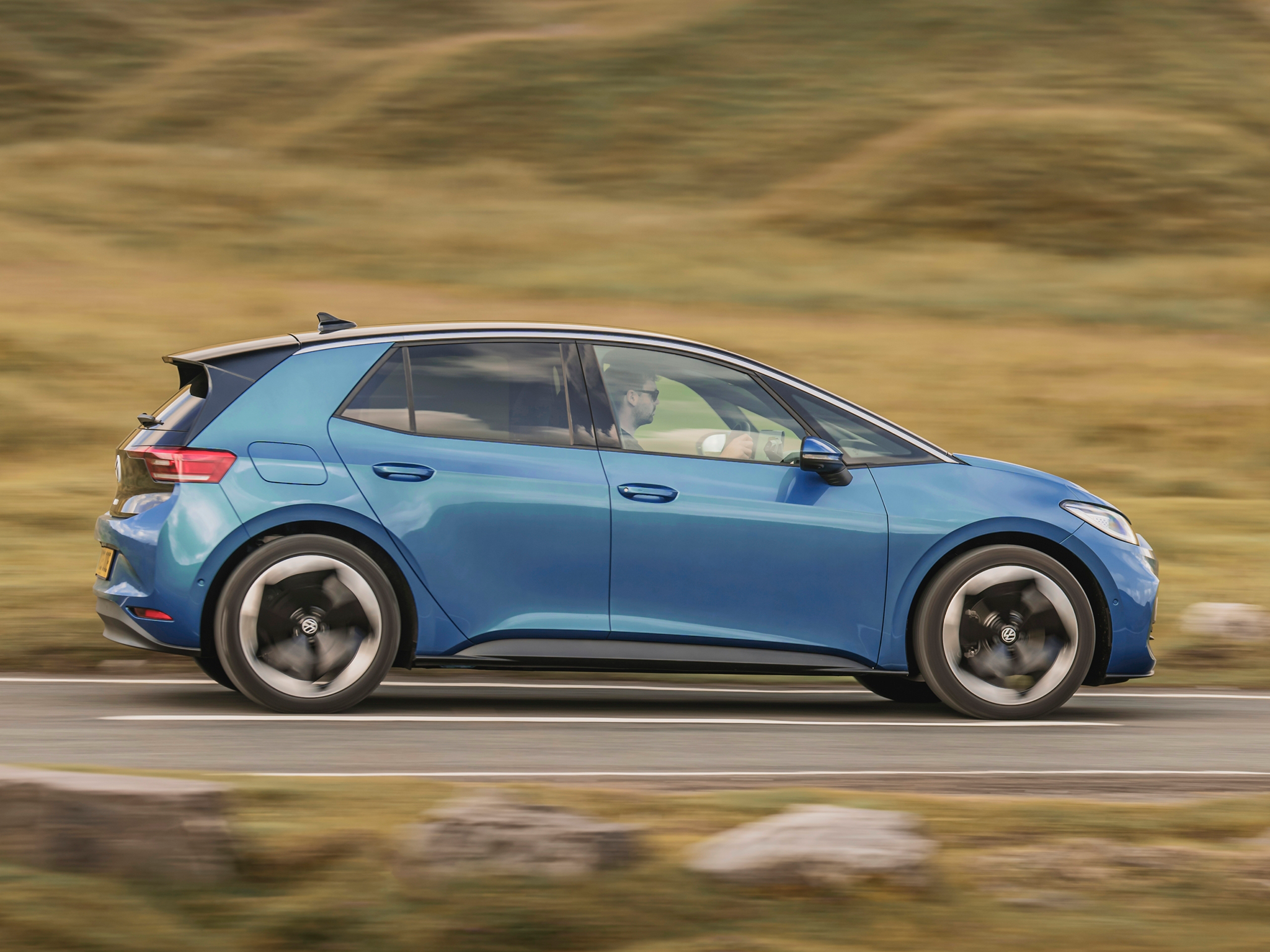
Independent rating: 7/10
- Pros: Good to drive, efficient, loads of space
- Cons: Flawed infotainment system
- Price: From £10,500
- Maximum claimed range: 336 miles
- Maximum charge rate: 125 kW (model year dependent)
- Seats: 5
- Dimensions: 4,264 x 1,809 x 1,564 mm
- Boot space: 385 litres
The Volkswagen ID.3 represents a significant shift for VW as it marks the company’s first purpose-built electric vehicle on its new MEB platform. The ID.3 is designed to be the “electric car for the masses,” offering a blend of affordability, practicality, and modern design that appeals to a wide audience. With a range of up to 340 miles in the Pro S version, the ID.3 provides one of the most competitive ranges in its class, making it suitable for both city driving and longer journeys.
Early ID. 3s didn’t live up to Volkswagen’s reputation for high-quality interiors – the materials used inside feel cheaper than owners of Volkswagen Golfs, for example, would be used to. The cabin is spacious, with plenty of room for passengers in both the front and rear, and the boot is a practical size, making the ID.3 a great option for families.
Read our full Volkswagen ID.3 review
Comfort is another area where the ID.3 excels. The ride is smooth and composed, with the suspension doing a good job of absorbing bumps and imperfections in the road. The seats are comfortable and supportive, making long journeys more enjoyable. The ID.3 is also quiet on the move, thanks to its electric powertrain, which enhances the overall comfort level.
When it comes to driver appeal, the ID.3 offers a pleasant driving experience, with light and responsive steering and decent acceleration, particularly in the more powerful versions. It’s not a performance car, but it’s enjoyable to drive and feels stable and secure on the road. There are some neat design touches, like the pause and play symbols on the brake and accelerator pedals
Running costs for the ID.3 are low, as you’d expect from an electric vehicle, while Volkswagen’s reputation for reliability adds to the appeal, making the ID.3 a solid choice in the used EV market.
Best: For long range
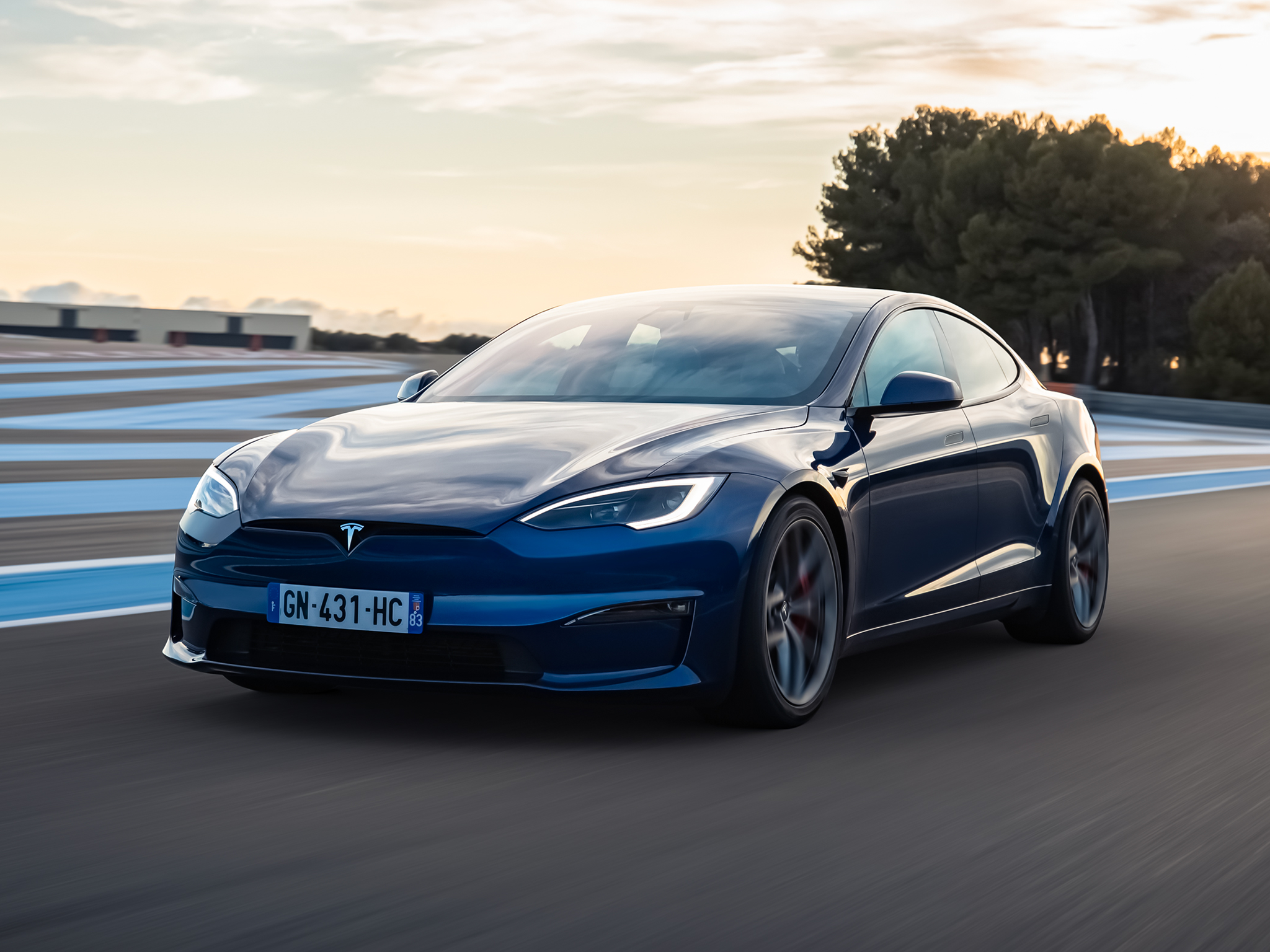
Independent rating: 7/10
- Pros: Technology, space, charging network
- Cons: Build quality, ride comfort
- Price: From £13,000
- Maximum claimed range: 393 miles
- Maximum charge rate: 250 kW (model year dependent)
- Seats: 5
- Dimensions: 4,970 x 1,964 x 1,445 mm
- Boot space: 793 litres
The original Tesla in the UK, the Model S, has set the standard for electric vehicles since its launch. The Model S combines exceptional range, blistering performance on some models, and cutting-edge features in a sleek, sophisticated package. With ranges of up to 405 miles in the Long-Range version, the Model S is still the benchmark for long-distance electric travel – and the prices make it more tempting than ever, especially with a few cars still getting free Supercharging for their owners.
Build quality in the Model S has improved significantly over the years, but it had to; early models had some issues with panel gaps and interior fit and finish. The interior is minimalist and modern, with a massive central touchscreen that controls nearly all the car’s functions. The the cabin is spacious and comfortable, with plenty of room for passengers and luggage.
Comfort levels in the Model S are mixed with a firm ride on some models. The seats are comfortable and supportive, and the cabin is also very quiet, with minimal wind and road noise, which enhances the overall sense of luxury.
Driver appeal is where the Model S truly excels. With its dual-motor all-wheel-drive system and instant torque, the Model S delivers supercar-like acceleration in some models. The handling is also impressive, with precise steering and a low centre of gravity that makes it feel agile and responsive, despite its size.
Running costs for the Model S are low, particularly when compared to similarly powerful petrol or diesel vehicles. The all-electric powertrain means low ‘fuel ‘costs, and Tesla’s Supercharger network makes long-distance travel easy and affordable. Tesla’s over-the-air software updates mean that the car’s technology remains up-to-date, adding to its appeal.
Best: For ease of use

Independent rating: 6/10
- Pros: Technology, space, charging network
- Cons: Build quality, ride comfort
- Price: From £9,000
- Maximum claimed range: 246 miles
- Maximum charge rate: 100 kW
- Seats: 5
- Dimensions: 4,060 x 1,765 x 1,433 mm
- Boot space: 309 litres
The Vauxhall Corsa Electric is a solid choice for those seeking a reliable and practical used electric vehicle. Known for its compact size and nimble handling, the Corsa Electric is particularly well-suited to city driving. Owners often praise the car’s smooth and quiet performance, which contrasts favourably with traditional petrol models, while there should be plenty of choice with decent availability on the used market.
In terms of reliability, the Corsa Electric generally performs well. The electric motor is known for being dependable, with very few reports of major issues. The battery has shown to maintain good range over time, though it’s wise to check the battery health before purchasing. Vauxhall offers an 8-year or 100,000-mile warranty on the battery, which provides some peace of mind.
Read our full Vauxhall Corsa Electric review
Build quality is respectable, with a sturdy feel to the interior and exterior. However, some owners have noted that the cabin materials are not as premium as those found in some rivals like the Peugeot e-208. The infotainment system is functional but can be slightly slow, especially on older models.
Owners typically report a positive ownership experience, appreciating the low running costs and ease of driving. The Corsa’s compact dimensions make parking straightforward, and its range is generally sufficient for daily commuting.
10. Kia EV6: From £24,500, Kia.com
Best: For style
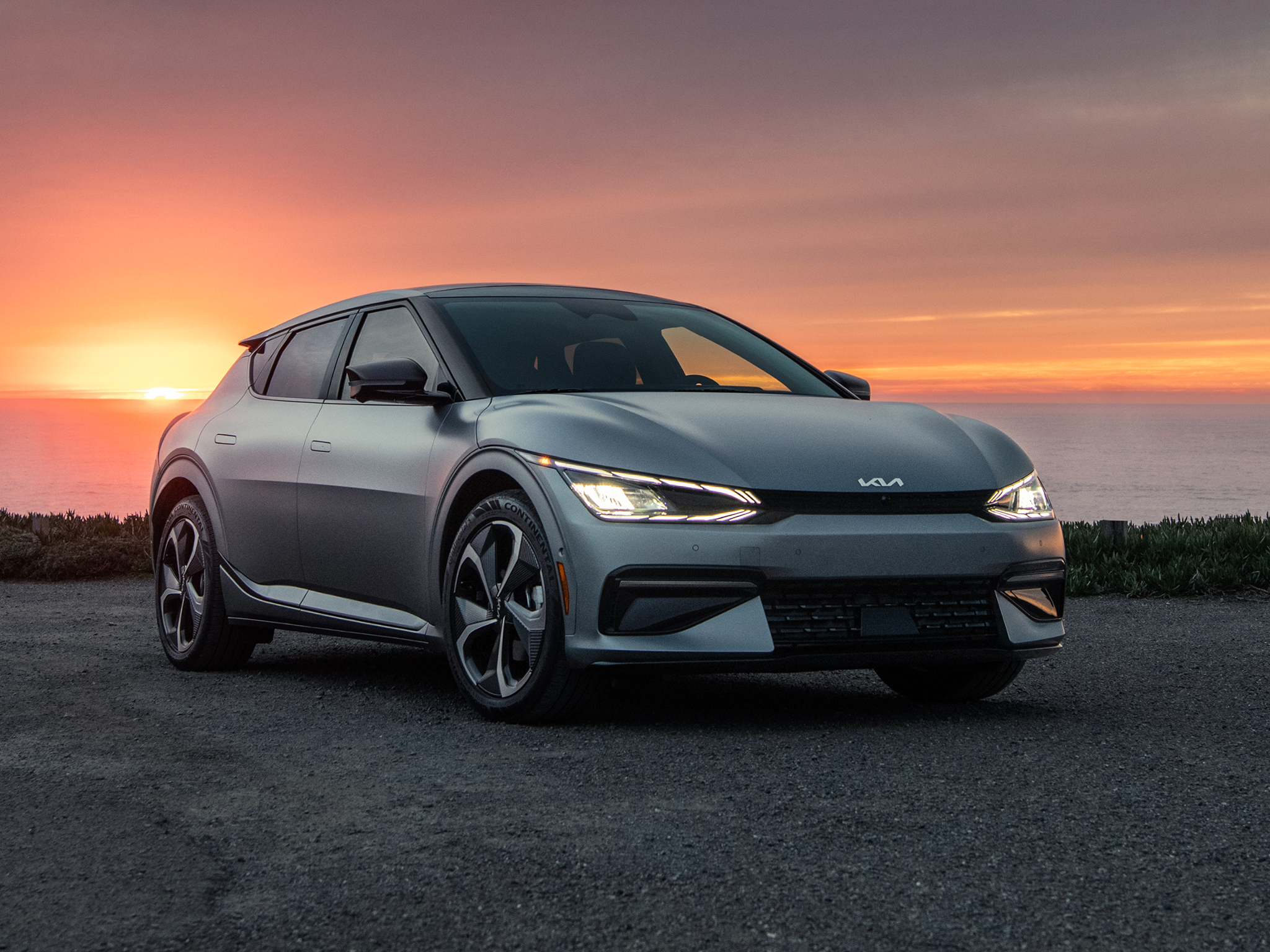
Independent rating: 6/10
- Pros: Generous warranty, great style, fast charging
- Cons: Firm ride, limited headroom
- Price: From £24,500
- Maximum claimed range: 328 miles
- Maximum charge rate: 235 kW
- Seats: 5
- Dimensions: 4,695 x 1,890 x 1,550 mm
- Boot space: 490 litres
Another Kia on our list and not just because of the remains of the seven-year warranty that used buyers will benefit from. The EV6 is a sporty, spacious hatchback that has persuaded many premium car owners to switch to Kia. And it’s easy to see why with great looks and a smart interior that’s packed with tech. You might find headroom a little tight in the front, but there’s loads of space in the back, while the boot is an okay size, if not enormous.
Kia has made great strides in quality in recent years and the EV6 is the perfect example. The brand’s reputation for reliability is building strongly, too. We’d avoid the fast and four-wheel drive versions unless that’s what you really want – the rear-wheel drive car offers the best blend of value and range, and it’s still great to drive despite the car’s weight. The payoff for sporty handling is a rather firm ride, though.
Fast charging at an appropriate public charger is a real bonus, as is a level of equipment inside even the more basic models, with every car getting a good roster of safety kit, too.
The EV6 is far from the cheapest used EV you can get, but the benefit of that warranty means you’ll have even less to worry about than on rival used models.
Electric car FAQs
Are electric cars cheaper to run?
When it comes to ‘fuel’ and maintenance, yes they are. They can still be expensive to buy – unless you can get a good deal – and insurance can be a bit pricier at the moment, but prices are coming down for both.
Are electric cars actually better for the environment?
With zero emissions from usage, they are far better for the local environment.
How long do electric cars last on full charge?
It depends on the size of the battery and car. Currently ranges of new EVs go from around 120 miles up to over 400 miles.
Will electric cars get any cheaper?
They already are – the Dacia Spring costs from £14,995. Prices and leasing deals are getting more affordable
Which electric car brands are most reliable?
All electric cars tend to be more reliable than petrol or diesel cars as they have fewer moving parts. Nissan – which launched the first EV – has a good reputation for reliability.
The verdict: Electric cars
Buying a used electric car isn’t the worry it once was. In fact, the increase in the number of people buying a used EV is currently outstripping those buying new.
Worries about the longevity of batteries are a thing of the past. As you can see in our Should You Buy A Used EV video, we drove a Tesla Model S that was over nine years old, had covered over 250,000 miles and still had 84 per cent of its original battery capacity left.
That’s not unusual – Tesla told us of all the cars it sells under its certified pre-Owned programme, they never see a car under three-years old with less than 90 per cent of its capacity. So it’s no surprise to see a couple of Teslas on this list: the Model 3 and the Model S represent the best value due to the sheer numbers available, although we could see the Tesla Model Y joining the list at some stage.
It’s one of the original EVs that tops the list – the BMW i3. The little i3 is still a sensational car today and proves how ahead of its time. Even the early model with the smaller battery and a range of around 100 miles is perfect for zipping around towns and cities.
We’ve got perfect family models here, like the Kia Niro and the Renault Zoe, and if you fancy a bit of luxury, the Jaguar I-Pace is great value right now.
Another one of the originals, the Nissan Leaf also makes our list, while there are newer models like the Kia EV6 and Volkswagen ID. 3 that are popular enough used to be great secondhand buys.
So the bargains are out there, and if you’re on a smart energy tariff like E.ON Next Drive, running costs can be super-low, too.

